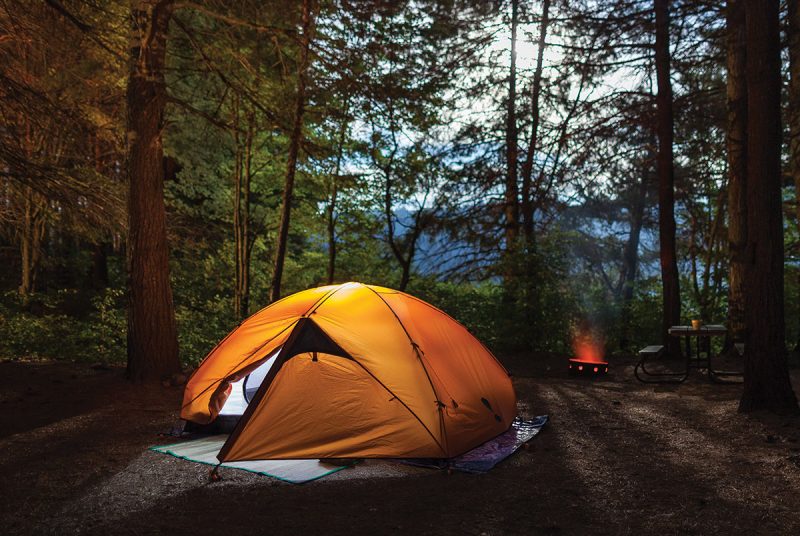Surprising ways to get better sleep at night
If you’re still not logging in the recommended seven hours of Z’s per night (and most Americans aren’t, according to the Centers for Disease Control and Prevention), here are two unexpected tactics to try:
Go Camping
A study from the University of Colorado Boulder reveals that as little as one weekend spent camping in the backcountry can dramatically improve your circadian rhythm, the internal process that regulates your 24-hour sleep-wake cycle. It’s not sleeping in a tent or noshing on s’mores that makes the difference, says CU integrative physiology professor Kenneth Wright, the study’s lead author. Instead, it’s exposure to natural lighting. “Our internal clock responds strongly and quite rapidly to the natural light-dark cycle,” he says.
For the study, volunteers were sent into the Colorado wilderness for a week of backcountry camping without flashlights. When they returned, researchers discovered they experienced the onset of melatonin, which prepares the body for sleep, nearly two hours earlier than they had before they left. The melatonin began to wane earlier in the morning as well, so the campers went to bed early and woke up early, feeling amazingly refreshed.
Another finding: Even two days of relying on outdoor light can help reset your internal clock.
Wright says taking steps each day to increase your exposure to natural light, like going for a walk or sitting by a window for 30 minutes every morning, can help. At night, dim electrical lights and refrain from using electronic devices.
Paint Your Room a New Hue
In a study of 2,000 Britons’ homes, Travelodge found that residents whose walls were blue got the best night’s sleep – logging in a whopping seven hours and 52 minutes per night. Gazing at blue hues helped to reduce blood pressure and heart rate, which is essential in achieving a good night’s sleep.
Shades of yellow were second best for slumbering, closely followed by green, silver and orange. All of those colors were noted to create a warm and cozy atmosphere.
The worst color to paint a room, according to the study? Purple, which is overstimulating.
- South Dakota 71.6%
- Colorado 71.5%
- Minnesota 70.8%
- Nebraska 69.6%
- Idaho 69.4%
Try This
Still having trouble falling asleep? Try THRIVE REST, a premium gel formula to support sleep health, giving the body the essential nutrients needed for a restful and calming effect and relaxation support. REST is a dual-action formula developed to help you go to sleep, stay asleep and wake up refreshed. For best results, combine REST with the THRIVE 8 Week Experience.
© bastian sander/eyeem


